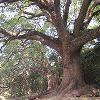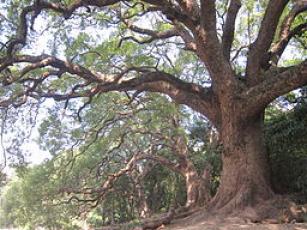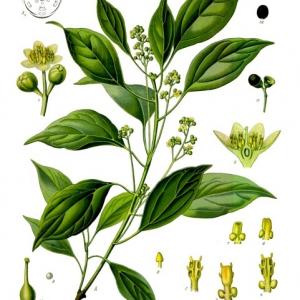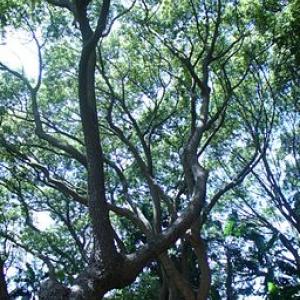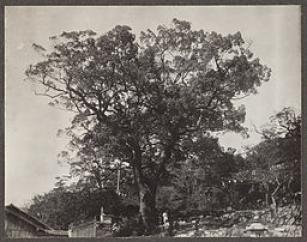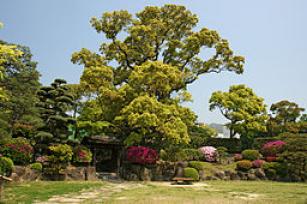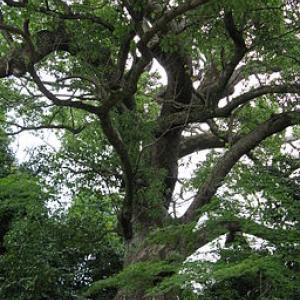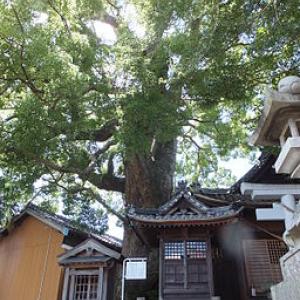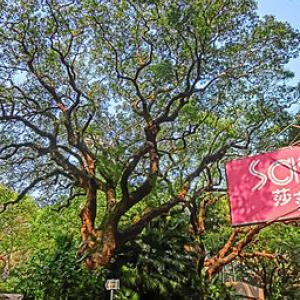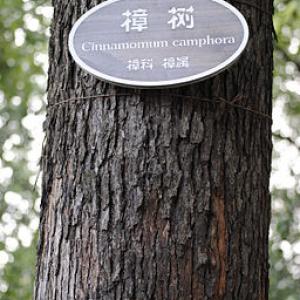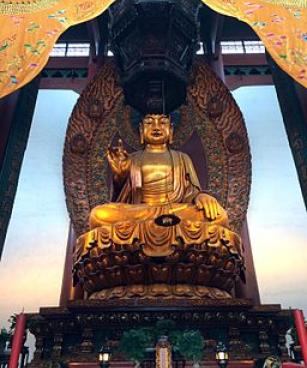The camphor or camphor laurel tree (Cinnamomum camphora) is native to China, Japan and Taiwan with botanically similar sub-species now growing in many other countries.
History and usage
A member of the Lauraceae family, camphor trees are tall evergreens with a spreading canopy made of glossy, bright green aromatic leaves that smell of camphor when crushed.
The pale wood of the tree is insect-resistant with a long lasting aroma and delicate texture that has been used in construction, cabinet making and for wood carvings in temples and shrines throughout history. Camphor oil was originally harvested from fissures in the rough bark that exude an oil which subsequently hardens.
Stately camphor trees from the distant past still grow to this day close to Buddhist and Taoist shrines.
Natural camphor had applications as a culinary spice, medicinal, insect repellent and component of incense for many centuries.
Cinnamomum camphora oils
C. camphora produces a wide variety of essential oils. There are six different chemical variants or chemotypes: camphor, linalool, 1,8-cineole, borneol, nerolidol and safrole.
The chemotypes are dependent on the geographical origin of the tree and part of the tree used e.g leaf or wood/bark.
The Japanese true camphor tree or "Hon-sho" yields an oil that has 50% or more of camphor constituent. Camphor trees in India or Sri Lanka are also a source of camphor-rich oil.
Camphor trees with the safrole chemotype from China are a source of Chinese sassafras oil, a safrole dominant fraction from the crude oil distilled from C. camphora. Camphor oil production centers around the Guangdong, Guangsi, Jiangsi and Fujian provinces.
C. camphora grown in Madagascar yields a 1,8-cineole chemotype varying between 50-70% that is commercially known as ravintsara. The high concentration of cineole in this variant gives the oil fresh, eucalyptus type notes.
Ho essential oil or "Shiu" oil is steam distilled from the wood and leaf of the camphor tree ct.linalool in its native habitat of China, Japan, Taiwan and Vietnam, also known as "Ho-sho".
The trees grown in this region produce an oil with a linalool component between 70-90% and small quantities of camphor, gamma-terpinene and myrcene. Ho wood essential oil provides an alternative to rosewood essential oil, now endangered due to over- harvesting, as both share a similar aromatic profile and high proportion of linalool.
Ho wood essential oil
Ho wood oil acts as a top to middle note in a blend and its delicate, woody-floral aroma can be utilised as a blender-modifier in a variety of aromatic compositions.
The dominance of the aromatic monoterpene alcohol, linalool, in Ho wood oil, bestows a warm, dainty, slightly rosy, sweet, woody fragrance to the oil.
It can be blended seamlessly with essential oils such as ylang ylang, cedarwood, coriander, geranium, frankincense, rose, mandarin, orange, tangerine, lavender and sandalwood.
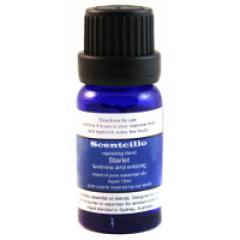
In perfumery, Ho wood is a valuable element in floral, floriental and fougere type fragrances.
Ho wood essential oil from China is a component of the Scentcillo Starlet blend. Its diffusive scent melds with the floral essential oils to gently enhance their radiance and feminine qualities.
Further reading
- Research article: Essential oil compositions and bioactivities of the various parts of Cinnamomum camphora Sieb. var.linaloolifera Fujuta.





